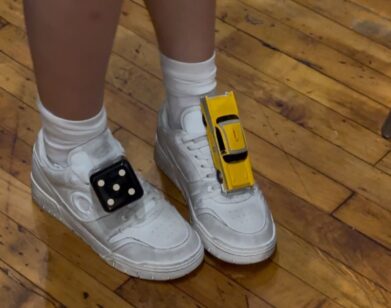Peter Dundas

HAIR PRODUCTS: KIEHL’S, INCLUDING SILK GROOM SERUM. HAIR: TYLER JOHNSTON FOR KIEHL’S/ONE REPRESENTS. GROOMER: ANDREW GALLIMORE FOR NARS/CLM. MAKEUP: ZOE TAYLOR FOR DARPHIN/JED ROOT. STUDIO MANAGER: MARK PATTENDEN. PHOTO ASSISTANTS: FENTON BAILEY, MALAK KABBANI. MAKEUP ASSISTANT: LILY GREGORY.
Creative director of Roberto Cavalli, London.
HAYLEY PHELAN: What makes for a successful design?
PETER DUNDAS: When I make a dress that someone wants to put on and somebody else wants to take off, then I know I’ve got it right. Because when someone looks good on the outside, they’ll feel good on the inside.
PHELAN: How has social media impacted the fashion industry?
DUNDAS: Social media is hugely important as a vehicle for communication. That’s the reality today, whether you like it or not. The good part is that you can continually share news about yourself and your company. But it can also make the design timeline more challenging.
PHELAN: In what way?
DUNDAS: Things are moving quicker and quicker. The internet age has made everything so immediate that what you’re doing can start to feel outdated. That’s probably the single thing that will most affect the fashion system in the near future. Time is the biggest subject matter in fashion today.
PHELAN: How does that affect the traditional fashion calendar?
DUNDAS: It’s almost like a centrifuge where it turns so fast that, in the end, you only see one thing. Now, in every season, you really do three seasons because you need to address the needs of consumers all over the world. For instance, in spring, you now have to have heavy coats and lighter coats, as well as high summer items. So it’s like, why are you even doing seasons? At some point, it’s not going to make sense.
PHELAN: How do you think the industry can adapt?
DUNDAS: Part of the solution is to actually embrace that speed. Embrace it and use it to our advantage—that’s what we have to get our head around. How can we best communicate and interact with the consumer through the possibilities of the digital or virtual world? Perhaps digital consumers will one day be able to virtually see themselves in the clothes projected on a website. That is very exciting to me.
PHELAN: With everything moving so fast, how do you keep up?
DUNDAS: It’s a huge challenge that’s not actually resolved. You just have to compensate by putting in as many hours as you can. If this wasn’t something I loved and felt absolutely passionate about, then I’d hate it.
For more from our “The State of Fashion” portfolio, click here.






